19 June – 25 June 2022
Bright-eyed and bushy-tailed, we enter a new chapter of our trip to Galicia, an ancient kingdom of north-western Spain. The name originates from the Celtic Gallaeci, who lived here when the Romans conquered the region c.137 BC. This region has been an autonomous community since 1981, with agriculture, forestry, and fishing being their most economic assets. A Coruña marina is a welcome sight after our lengthy time at sea.
Due to Brexit, our British-flagged boat must go through immigration checks, and so we do. This process gives us a taste of things to come in Spain. Governmental offices are closed from 14:00 during the week, and sometimes the doors shut even earlier. From 14:00, you take a siesta; this does not mean you enjoy a lengthy nap, but more a chance to hide from the scorching sun, which we are not used to. I have to add here that our dear traveling accomplice, Djell, gets it into his mind that he is becoming a tanned god, but in fact, he is starting to turn a strange hue of purple, the colour that beckons ‘peeling-off skin’ in a couple of days.
A Coruña has many play parks for the kids and an abundance of restaurants and terraces. A meal costs between 5 to 8 euros, and an alcoholic drink comes to about 2 euros. While we are in any of the restaurants or bars, Ava and William enjoy playing with their Lego sets.
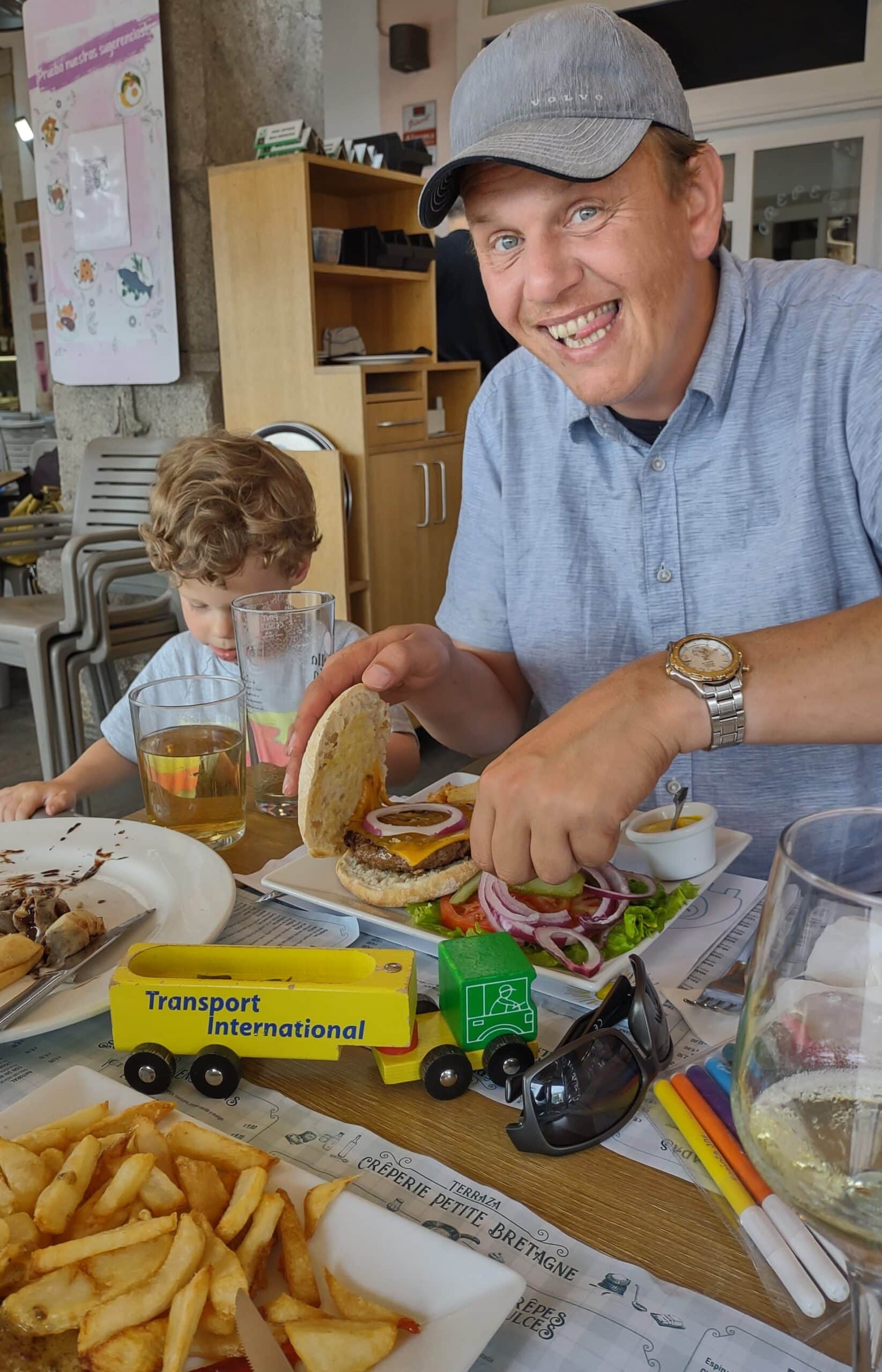
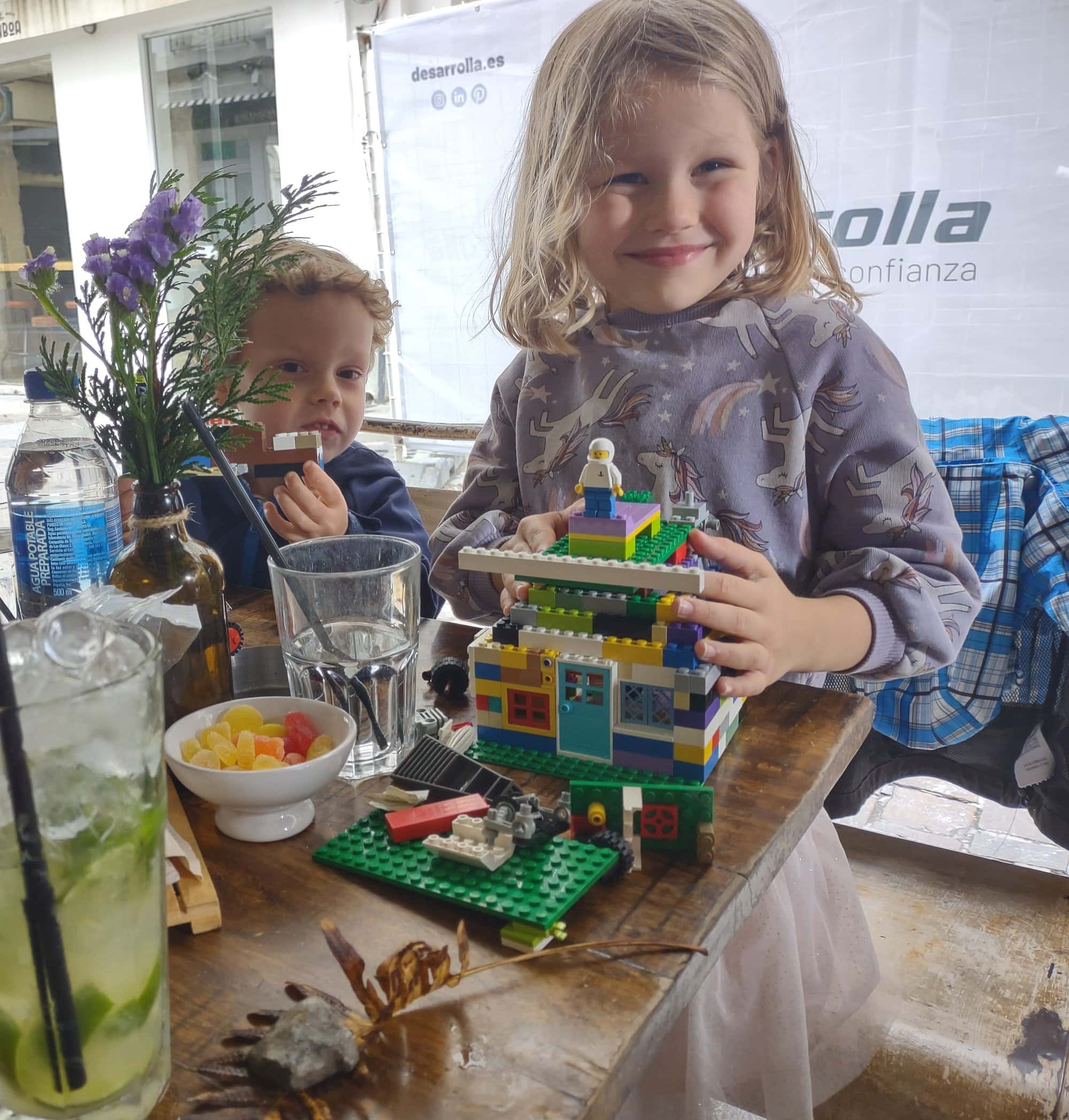
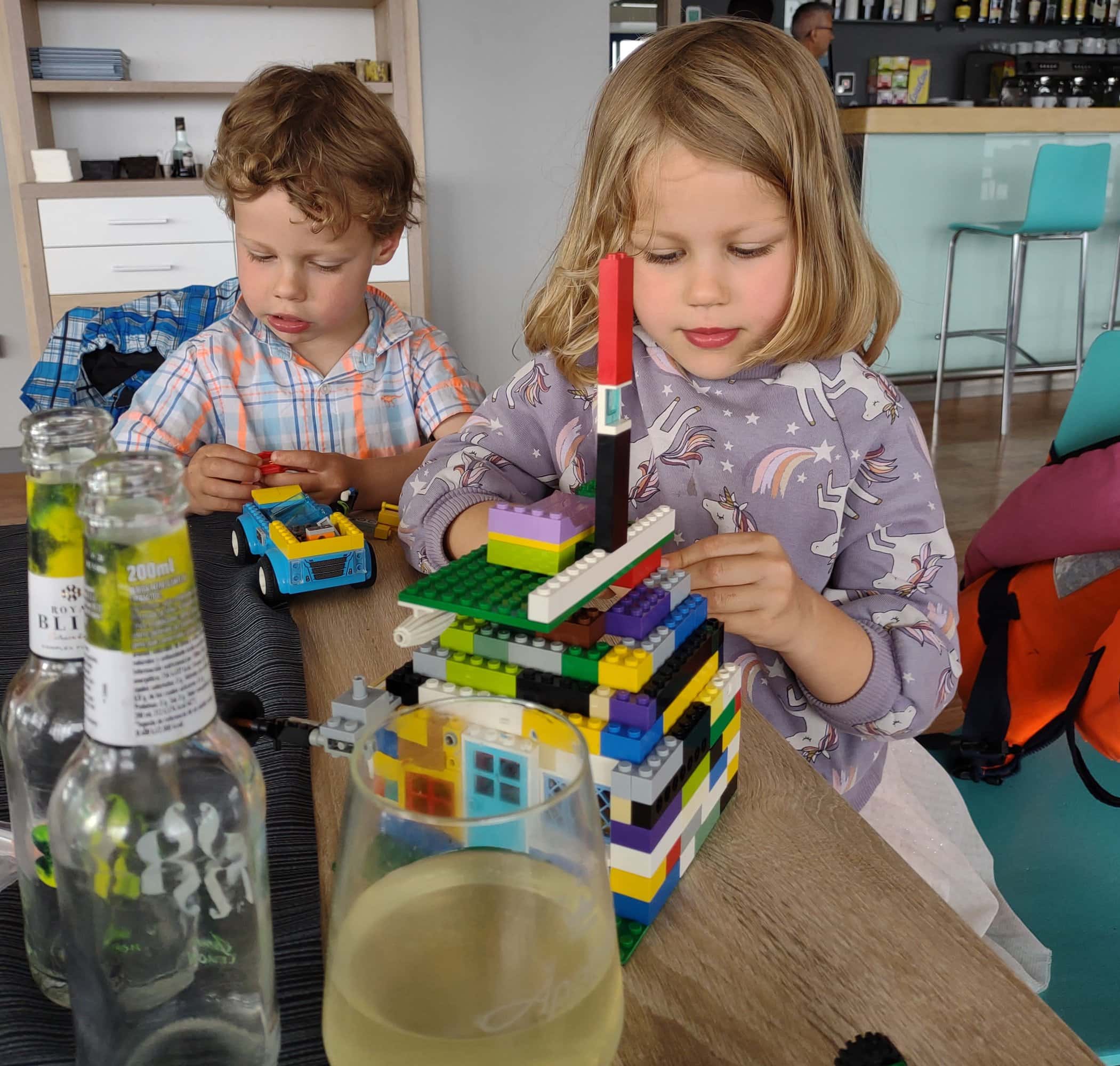
People are exceptionally kind and accommodating. We do not speak much Spanish, but you manage to get by with strange hand gestures and sounds that you imagine sound more like the object in Spanish…it does not, and you essentially end up looking like a person with a speech impediment playing Pictionary.
Before arriving in A Coruña, we had the convenience of having our shopping delivered to the marina. You order loads of groceries, grab a cart, and wheel things back to the boat from the delivery van. In A Coruña, however, it is a different kettle of fish, and it is good to have Djell help with the logistics of a shopping run. You do not have a car, and your boat is generally a good half mile from the best-stocked supermarket. You walk this mile to the store and load five people’s usual vegetables, fruit, bread, milk, and beverages and then need to lug this all back. You tend to look like a donkey carrying way more than you should in a combination of backpacks and carrier bags. It is an excellent workout and makes you more aware of your purchase. On the other hand, I do remember driving past people in Brighton, hauling loads of bags and children, and wondering whether they had a place to stay…now, we are those people with sun burnt bodies, tangled hair, and moving what would looks like a house’s contents from A to B.
On one of the evenings, Sander, Djell, and Hein (Sander’s dad) have a couple of drinks in a sports bar. The drinks are a third of the price we would pay in the UK or Netherlands, and for this reason, and it being Father’s day, indulging and enjoying was a top priority. Djell bumps into a Mariachi band and has them serenade Sander and Hein. A fathers day not to be forgotten.
After enjoying a few days at land, we fill our fuel (170 litres for 315 euros) and water tanks, get some necessary washing done, and set sail for Laxe. Due to low winds and the reluctance to the motor, we sail at a snail’s pace.
On route, Sander spots a fin in the distance; this was not a dolphin fin, but something more significant. It brings a sense of panic to the boat as we are still aiming to avoid an orca attack. The tension brings an eerie silence as we look out into the vast blue water, waiting for the following view of a fin or a blow hole. Just the day before, we walked past a dive shop, and we had been looking at how the different whales and dolphins behave in the water. Orcas are sneaky; you would only see their blowhole when they are close to the boat. As we continue our uncomfortable watch, we discover it is a lone Blue fin whale minding its own business. There is a sense of relief, and all the adrenaline from that moment gets you a little glittery; little do we know that this will happen more often.
We enter the deserted anchorage in Laxe later that day. Colourful houses dotted around the bay, waves lapping over the sandy beaches, little fishing boats bobbing on their moorings, and green mountains towering over the bay are absolutely perfect.
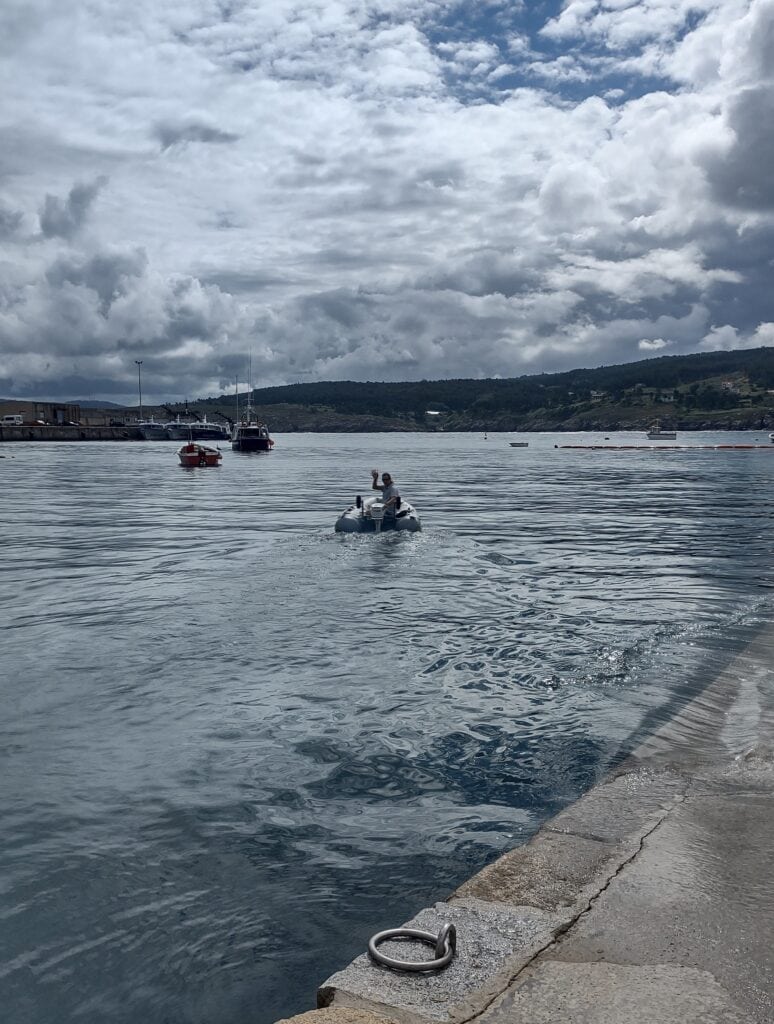
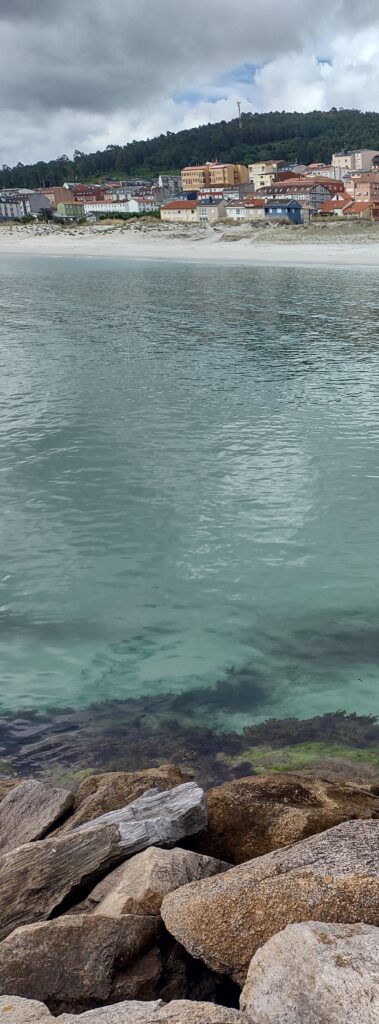
Laxe grows on you, like a perfect holiday destination where it is hard to leave, and you promise yourself you will return. The people are friendly, the food is cheap, and the bay is straight out of a postcard image. We spend our first afternoon on the beach; there are rain clouds above us, but the heat of the land overpowers us, and the temperature is just right. Ava loves to swim; even though the water is not all that warm yet, she dives and darts like a little mermaid. On the other hand, Will loves the sand and has come to enjoy throwing it in the air like confetti on a wedding day and having it all land on him.
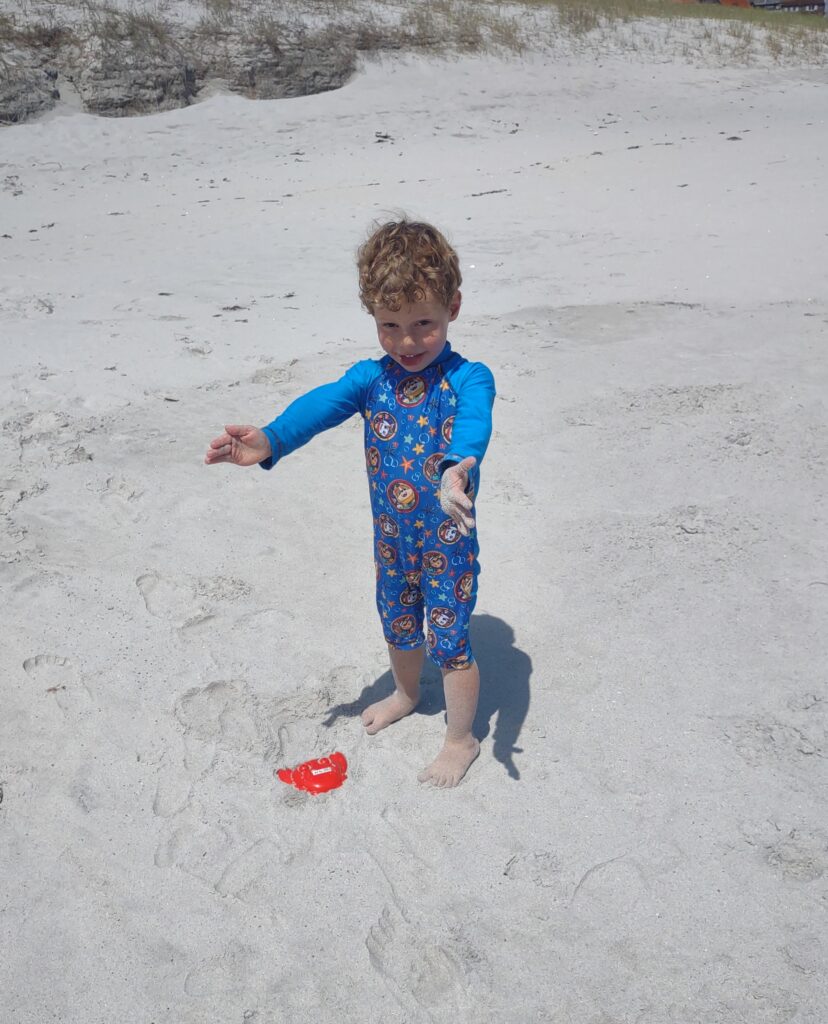
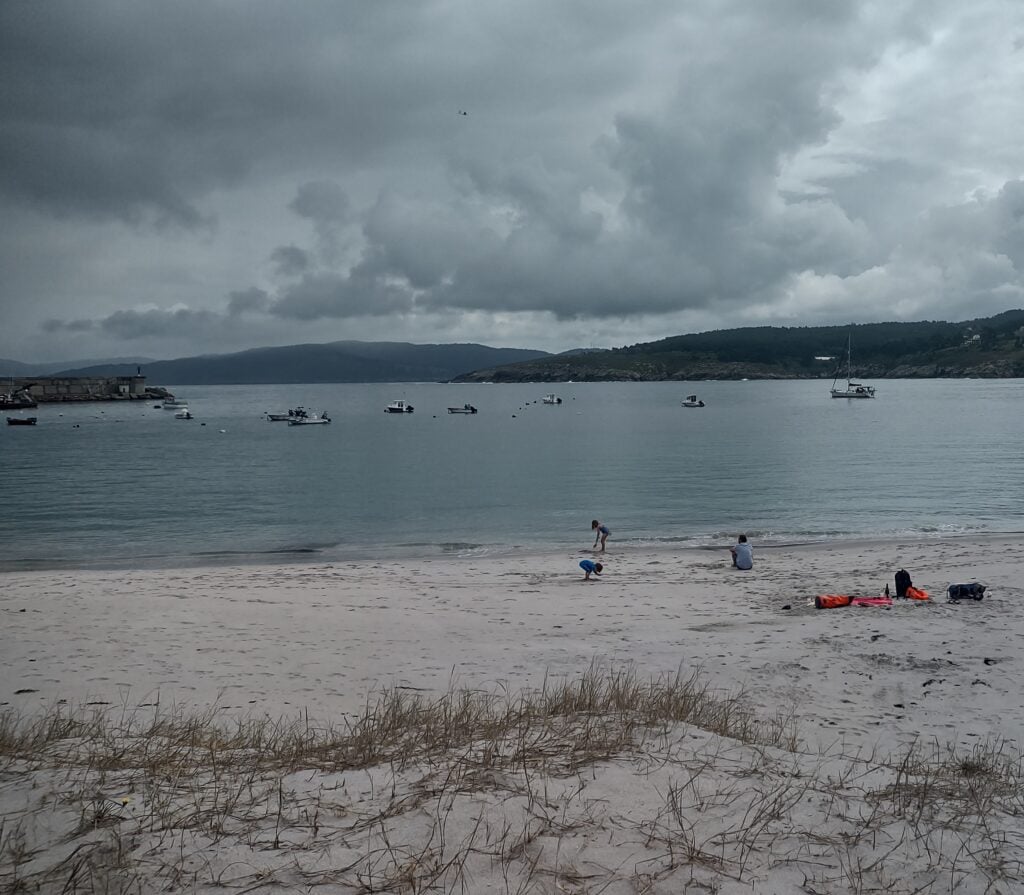
Since moving on to Susie Jane, the kids and I have spent many hours searching for sea glass on the beaches from Brighton to Rottingdean. It has been a relaxing and meditating practice and something I was looking forward to doing again. In Laxe, there is a sea glass beach called Praia dos Cristais. The sea glass here comes from an old landfill for bottles and glass containers. Over time, the glass has been shaped and polished between the jagged cliffs on the ocean into beautiful gems. The glass is all over, in various colours of green, white, blue, brown and the occasional pink or red. It’s fantastic and well worth the hike in the heat.
But of course, as cruising sailors, you must be taught some lessons by the sea…
Sander takes Ava and me to shore to see Capela de Santa Rosa de Laxe, a chapel built in 1941 which offers spectacular views of the bay and the Atlantic. It is a short walk up from the bay but exceptionally steep towards the end. Little winding roads lead you to this blue-white chapel overlooking the bay. Ava, however, finds the resident garden snails much more enjoyable.
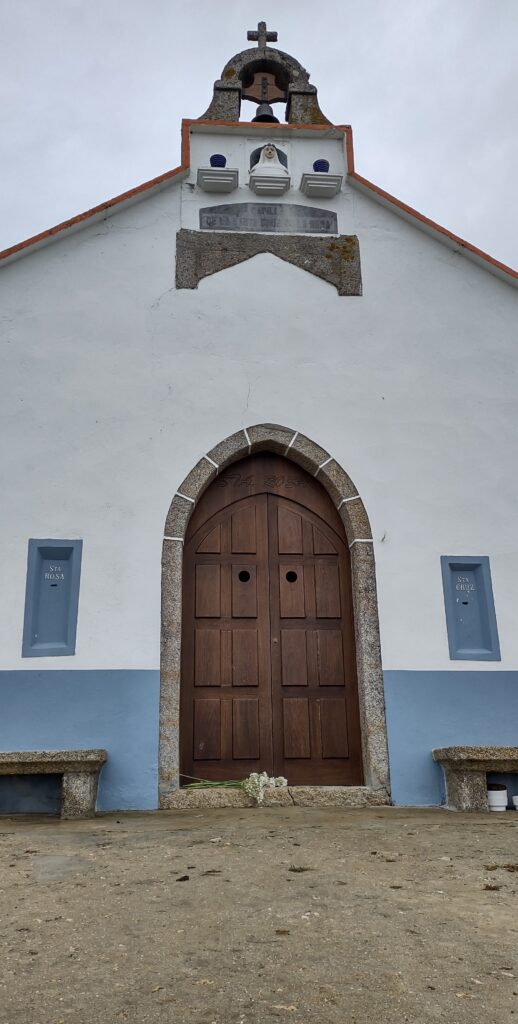
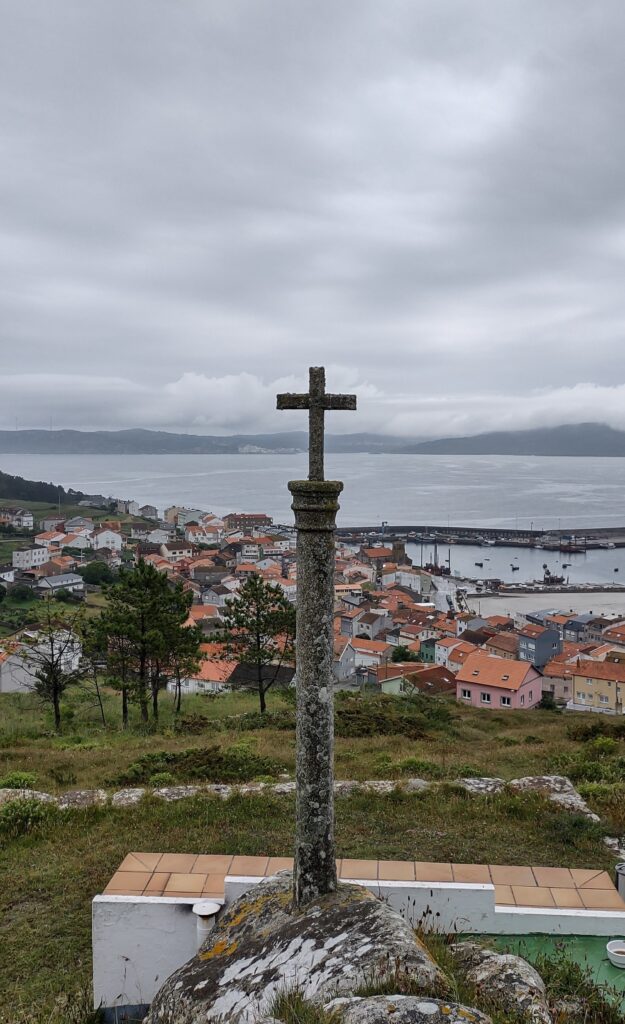
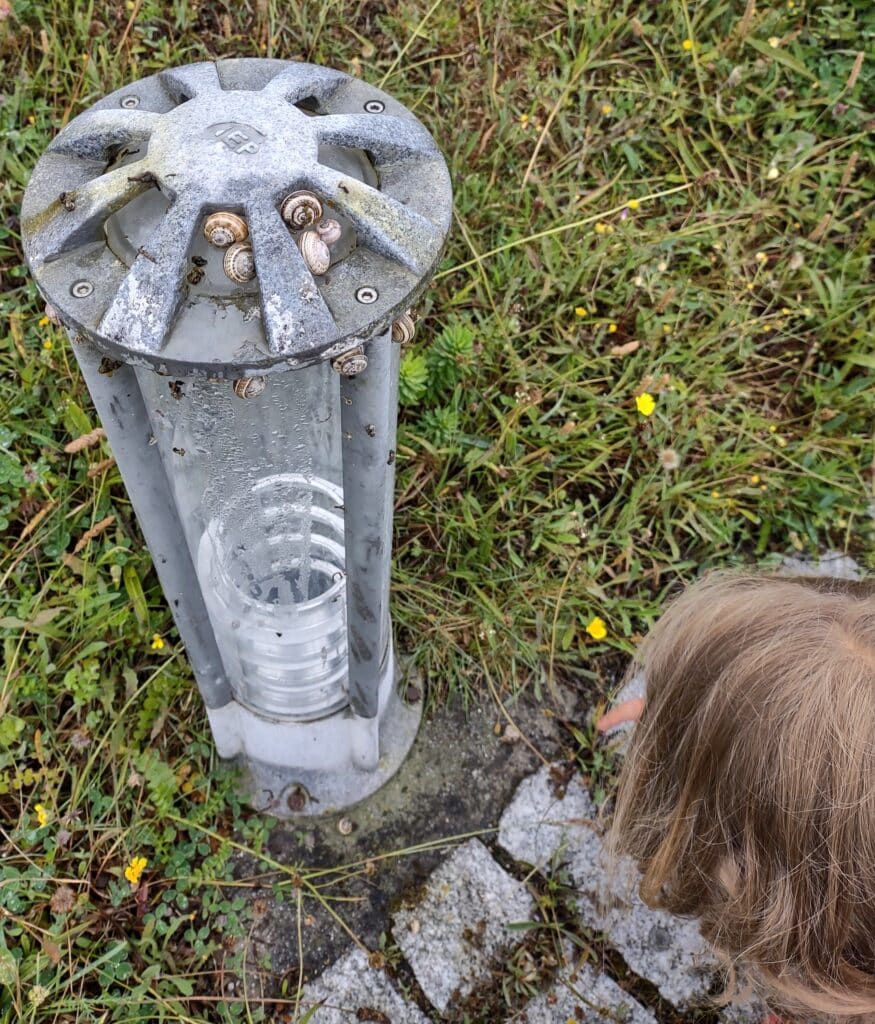
I received a panic call from Sander that our dinghy (aptly named Billy Bob, after Susie Jane’s hickish name) had departed it’s securing from the boat and was missing in action. William, Sander, and Djell are on the ship, and we are on land. Between us, we try to spot him and think how much I regret not learning more Spanish before arriving to ask for help or tell the fictional person off for stealing Billy. We spot him attached to the wall in the port. Some fishermen had spotted Billy working his way out of the bay. As we were the only sailboat in Laxe, they knew it was ours and brought him back safely. If this had not happened, we would be without transportation from Susie Jane to land (unless going into a Marina, of course). I will say that I assume a granny knot might have been used to tie Billy to the boat…
With all this done and over, we prepare to head to our next anchorage in Camariñas.
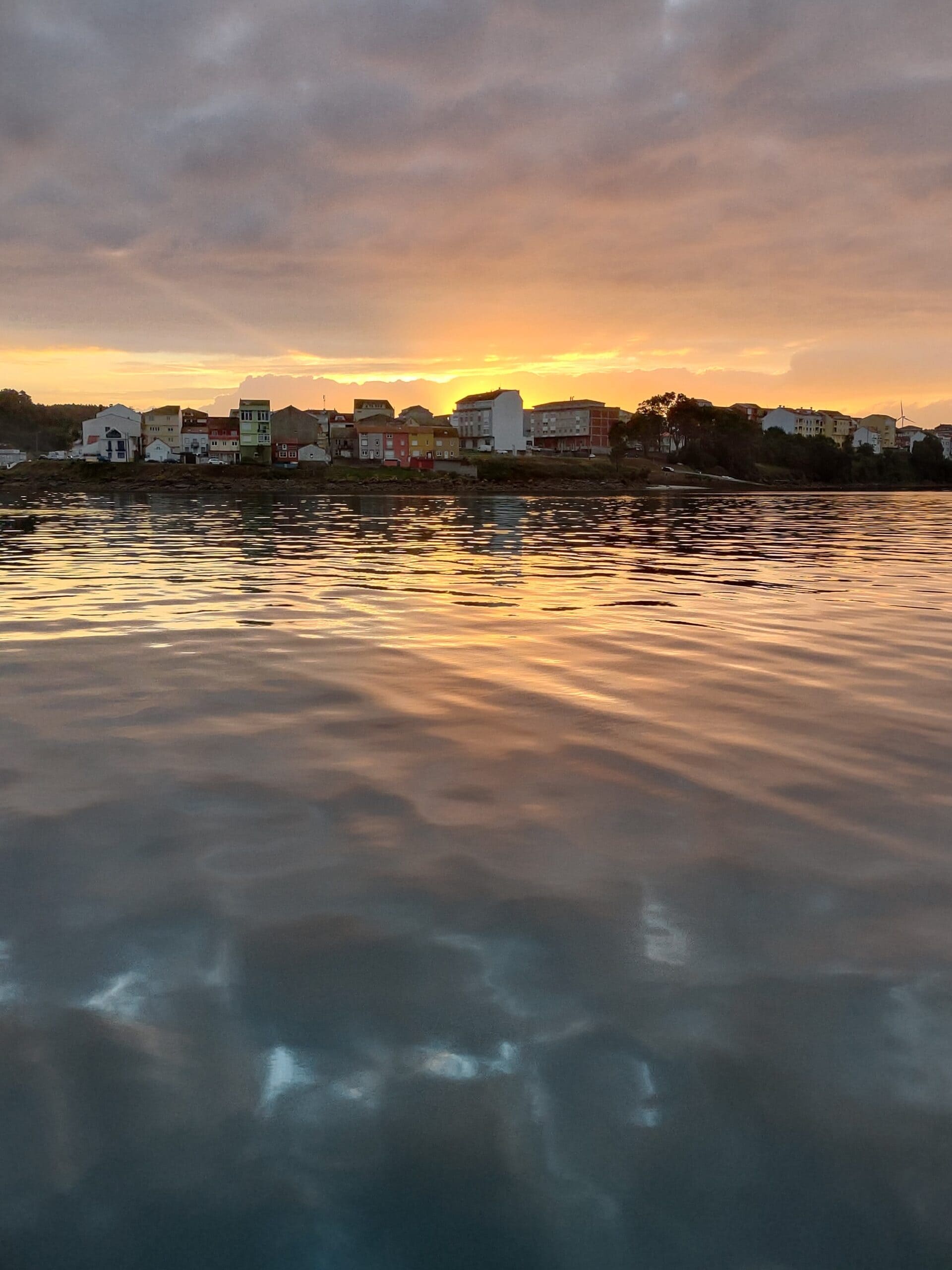
We leave Laxe with the boat traveling at 7 to 7.5 knots and impressed with how easily she climbs the waves and handles the wind. And then, the wind dies down, and you bob about the water like some driftwood being toyed with. The cliffs surrounding this peninsula are jagged from years of Atlantic waves pounding at them, they are spectacular, and we are in awe at seeing this from this perspective. We reach Camariñas at 10 pm and anchor close to where the locals celebrate the summer solstice. There is a combination of English and Spanish music, fireworks displays, and a colossal bonfire. By 2 am, the music is still playing, and the bonfire is growing bigger. The smoke drifts through the village like a grey blanket.
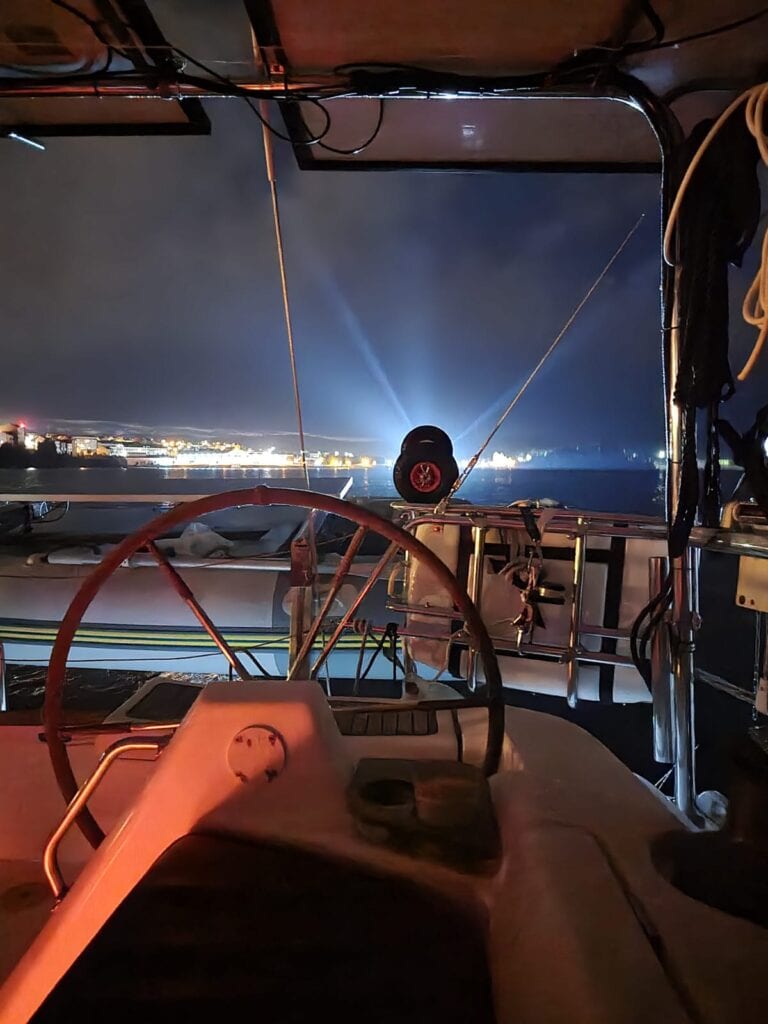
The next day is a cloudy day filled with rain and more rain. The wind is so strong that another couple of sailors must wear their full wet weather sailing gear to take their dinghy to shore. Watching how they struggle to get to land with waves bombarding their bow, we decide not to take the risk with the children and spend the day on the boat. When the sun is out, the small living space on Susie Jane seems bearable between 5 people, but when there is rain and everything is wet, the area becomes exceptionally cramped. With this, each of us automatically starts with our projects to relieve the stress. Ava and Will’s cabins have books and toys, but their favourite is their Legos, which brings on hours of creative play on the dining table and their voices changing to mimic the characters they are enacting. Sander does passage planning for passing Finnestera (a rock-bound peninsula that creates troubled water – believed to be the end of the known world during Roman times). Many sailors have expressed that Finnestera is like taking your boat through a washing machine. The water tumbles from all directions, and it becomes even more troubled if you have large waves. It would be best if you avoided a shipping lane, which forces you closer to the jagged cliffs than you would like. Djell’s quarters have been the tightest of all of us, and seen as he is a proper 1.91 meters in length, having to bend down while traversing most of the boat, today is a little more complicated than usual. But, he spends time washing his clothing and getting the smell of moulding, smelly socks from his cabin. We would love to explore the shore, but sadly, this will not happen in Camariñas. Looking at the wind and waves for the next day, we decided that it would be better to leave early the following day or stay in Camariñas for the next week due to low winds and high waves.
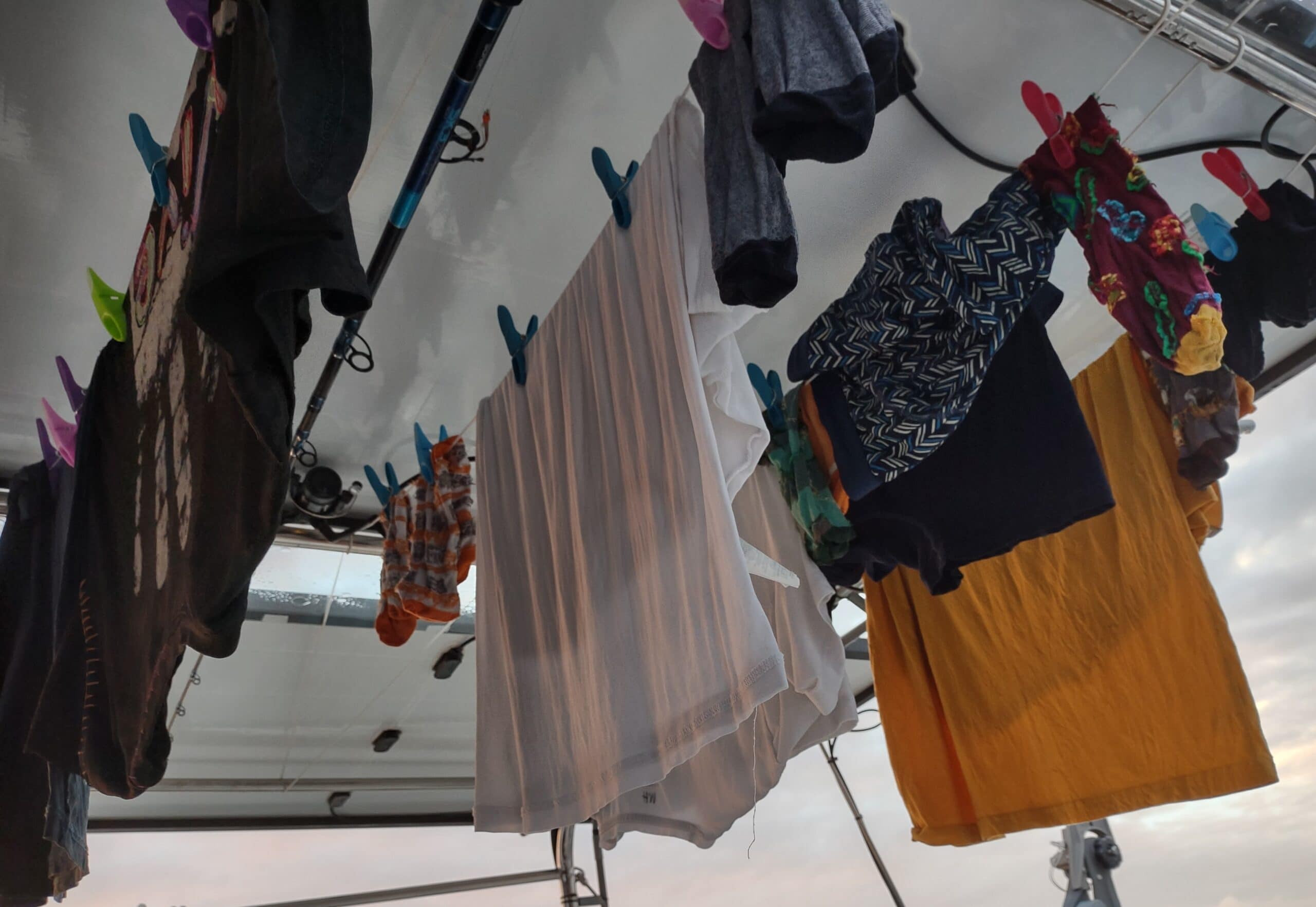
We set sail at 7 am and were greeted by substantial rolling waves coming in from two directions. When sat on the stern, the waves roll higher than our solar arch. You have a moment where you wonder how Susie Jane will handle this, and just like that, she surfs her way down the wave. It is genuinely impressive and scary at the same time. Every wave brings on a fresh adrenaline pump and then a couple of seconds of relief as you slide down. We have not yet encountered this swell and wave, making every part of the boat move. Items that are not secured soon fly throughout the boat. All of this tumbling makes us queasy and affects the children even more, as we have a rule that they need to stay below if the weather builds up. Downstairs is hot and humid as you can not open the hatches to avoid crashing waves spilling into the boat. Ava is the first to call out that she needs to vomit. We were too late to give her a seasick tablet this morning (usually two hours before departure), and she is perched above the toilet, emptying the very little she has in her belly. Once Ava is cleaned up, Will calls from his room and follows suit. So now, you have a hot and humid lounge area with random objects flying at you, struggling to balance, and then the smell of sickness in the air. It is not a pleasant experience and good for you, the reader, to know that it is not always flat water, clear skies, and picturesque moments. We have found that in these situations, it is better to bolster the children with pillows on the couch, vomit pot to a side, a water bottle on the other, and switch on a movie. They focus on the screen and do not pick up much on the stress outside.
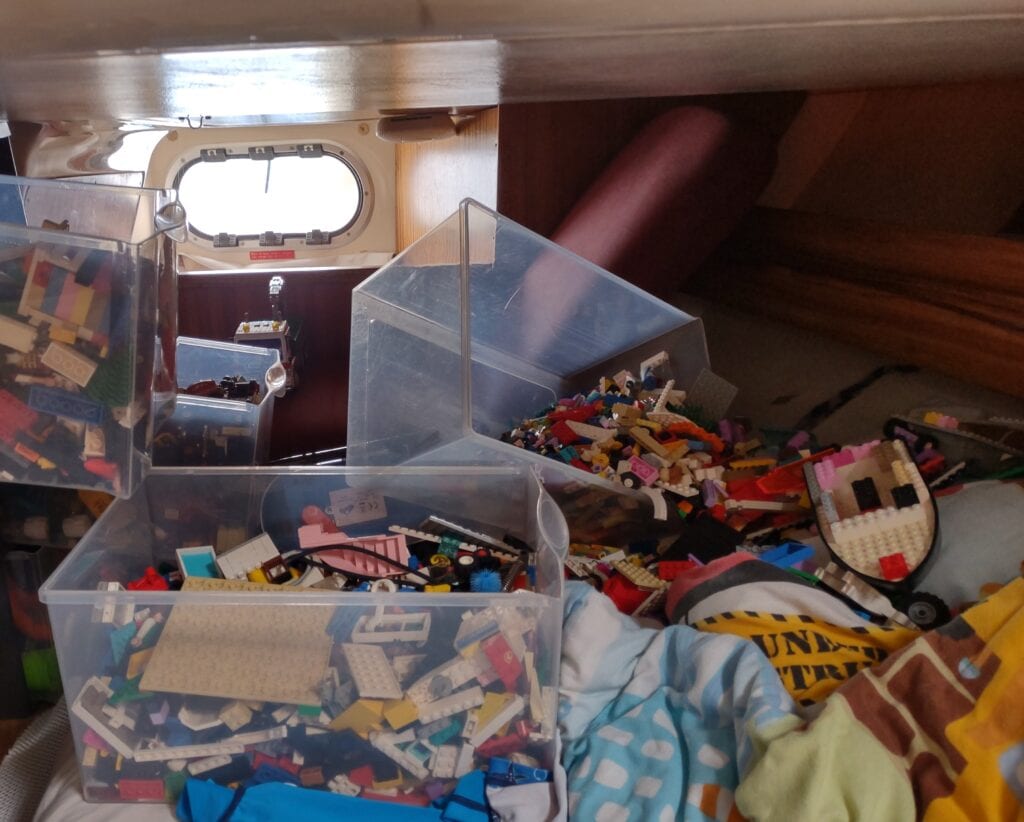
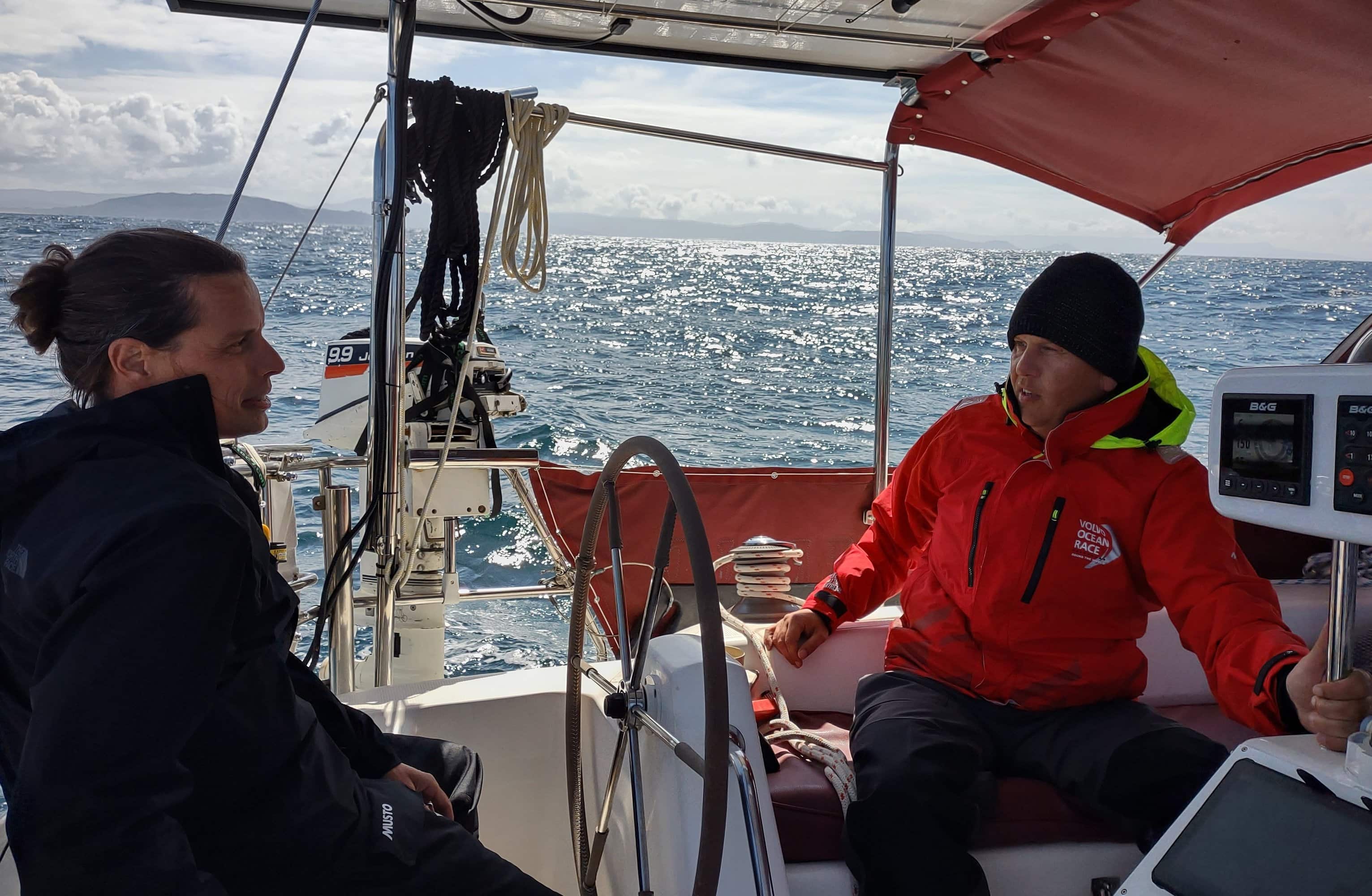
We met a lovely couple in Dartmouth who had sailed from the UK to the Caribbean and back. Christine had some very sound advice on a couple of things, one of which was seasickness. She said they do not tend to get seasick, but when they know they will hit heavier weather, they take a Scopoderm patch. Within 20 minutes, you are sound and able to take on anything. The effects last for up to three days. There was a caveat, though. If you do feel that you are hallucinating, take the patch off straight away. There are a couple of reports of sailors who, in dire moments, have taken the patches and suddenly felt the urge to plunge themselves into the water. Seen as I had just finished the seasick tablets on the children (my fault for not stocking up correctly), the patch was my only option. Like magic, once you stick it on, you start feeling at ease, even though your eyes are seeing the treacherous water around you, it looks pretty becalming. Within minutes, I can walk around the boat like a seafarer who has been at sea for millennia. Sander remarks that my words are a little muddled, and I look high. This festival-looking mum soon becomes more coherent, and we continue.
We reach speeds of up to 8.1 knots and then abruptly lose wind or the direction of the wind. It takes the best part of the day, but soon we are inching closer to our destination of the Vigo estuary. The bay is a heavenly sight considering how the day started, and we look forward to being able to walk straight without grabbing at any handholds and eat a proper meal.
Lessons learned:
- Language
- Have at least a couple of sentences down in the local language.
- Seasick
- Whether you do or do not get seasick, it would be good to have a good supply of tablets. The patches are more expensive but work almost instantly, even if you did not take a pill in time.
- Patches give cotton mouth.
- Tablets tend to get you constipated.
- Whales and Dolphins
- If you need to watch for the orcas on your sail, it would be worth having a visual of how each type of whale and dolphin comes up for air. It will save you from jumping up at every fin…especially down the western coast of Europe, where you will encounter many whales and dolphins.
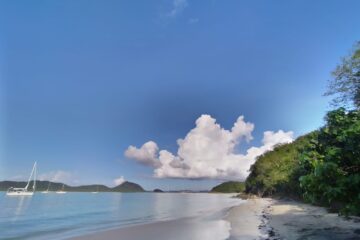
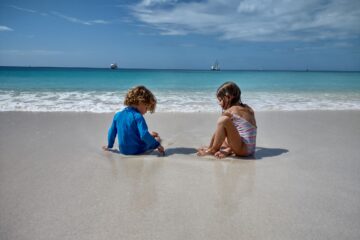
0 Comments